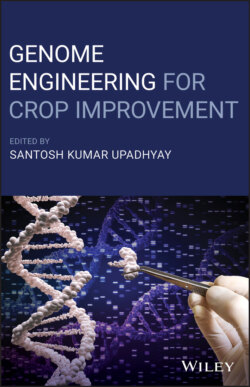Читать книгу Genome Engineering for Crop Improvement - Группа авторов - Страница 53
3.4.1.6 Cotton
ОглавлениеCotton is an important crop for the production of fiber, oil and biofuel. In addition, cotton serves as a cash crop for more than 20 million farmers in Asia and Africa. Despite the availability of synthetic alternatives, cotton remains an important source of fiber because of the advantages related to cost of production and unique features offered by cotton lint. Consumption of cotton products in the world is increasing day by day in a lot of places, but world cotton production is stagnant because of biotic and abiotic stresses. To meet the demands of the masses, production of cotton needs to be very high, with good quality. Cotton is also affected by diseases, causing significant losses to industry. Therefore, it became evident to utilize plant‐breeding approaches to tackle threats caused by both biotic and abiotic factors ultimately reducing fiber quality.
The genus Gossypium includes approximately 45 diploid (2n = 2x = 26) and five tetraploid (2n = 4x = 52) species, all exhibiting disomic patterns of inheritance. Diploid species (2n = 26) fall into eight genomic groups (A–G, and K). The African clade, comprising the A, B, E, and F genomes (Wendel and Cronn 2003), occurs naturally in Africa and Asia, while the D genome clade is indigenous to the Americas. A third diploid clade, including C, G, and K, is found in Australia. All 52 chromosome species, including Gossypium hirsutum and Gossypium barbadense, are classic natural allotetraploids that arose in the New World from interspecific hybridization between an A genome‐like ancestral African species and a D genome‐like American species. More than 95% of the annual cotton crop worldwide is G. hirsutum, Upland or American cotton, and the extra‐long staple or Pima cotton (G. barbadense) accounts for less than 2% (National Cotton Council, http://www.cotton.org, 2006).The genome of both sea‐island and upland cotton were sequenced in 2015, paving the way for the use of tools such as genome editing in genetic improvement programs (Zhang et al. 2015). Modern biotechnology and molecular approaches have been applied to plant breeding to promote plant‐genome manipulation and enhance selection of desired traits and performance of crops. The recent availability of genome‐editing technologies provides a vast opportunity to introduce targeted modifications in the genome efficiently to study the functional aspects of various components of plants.
